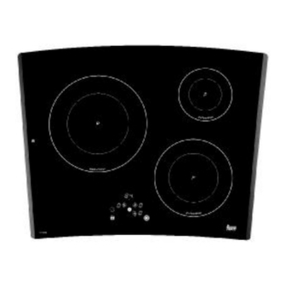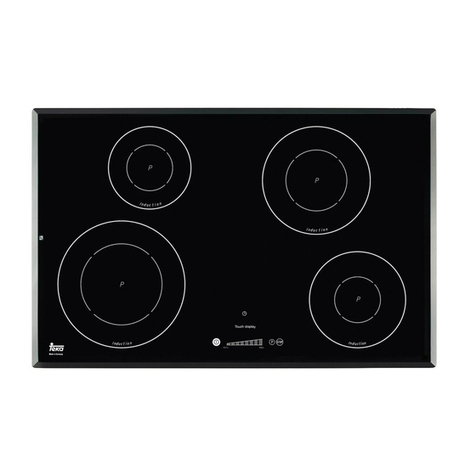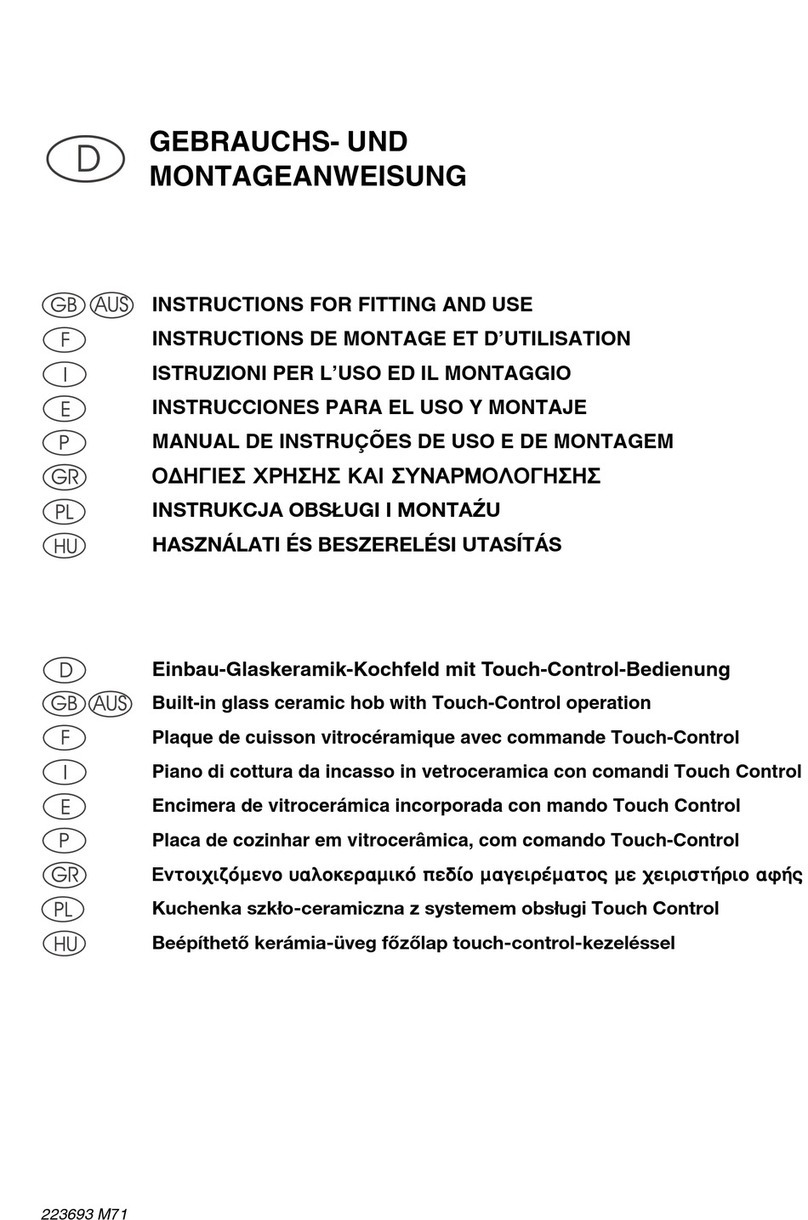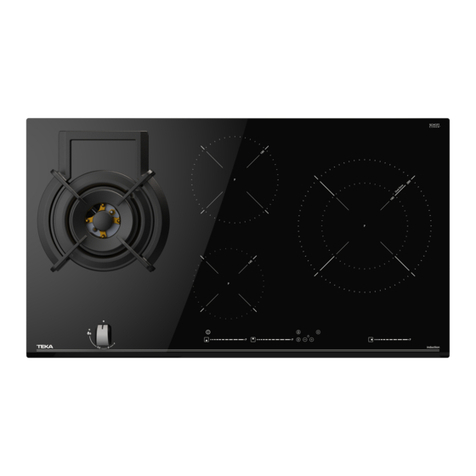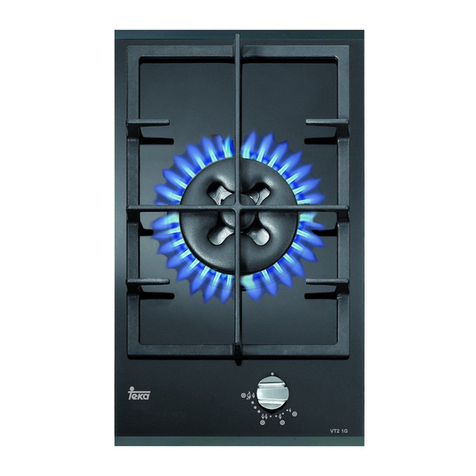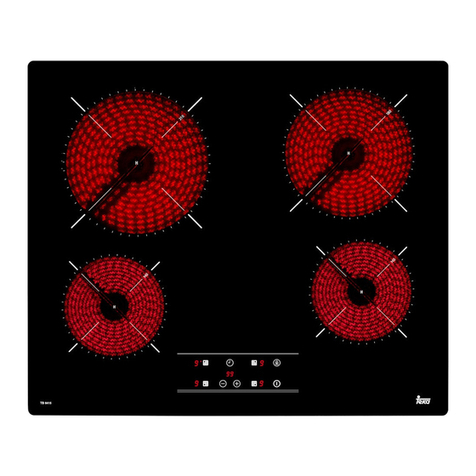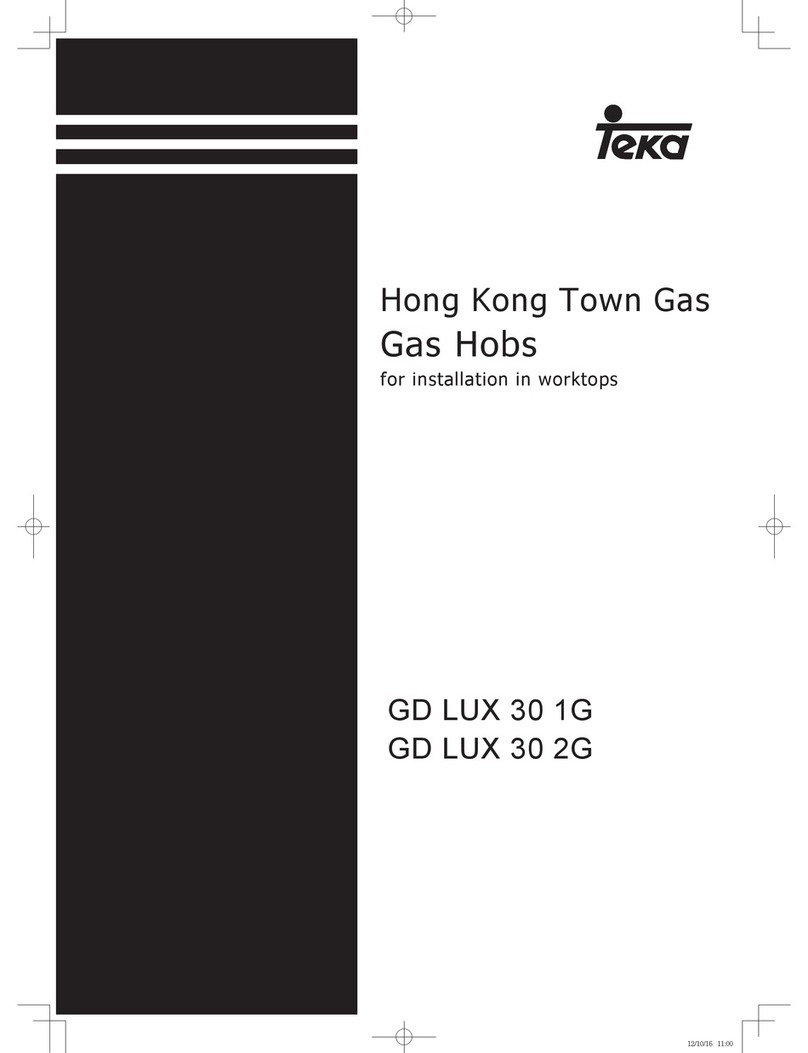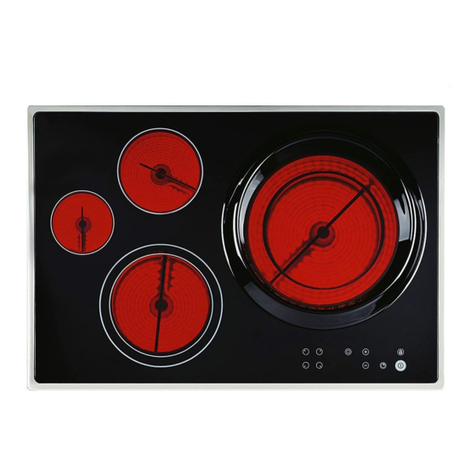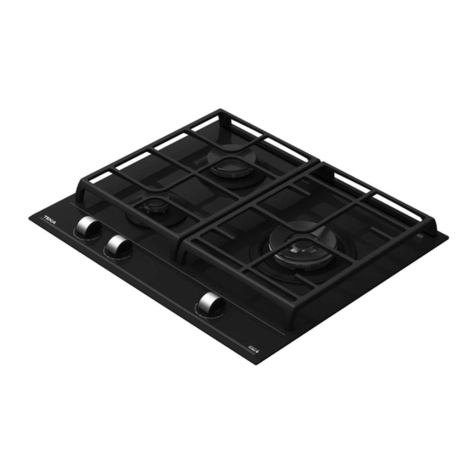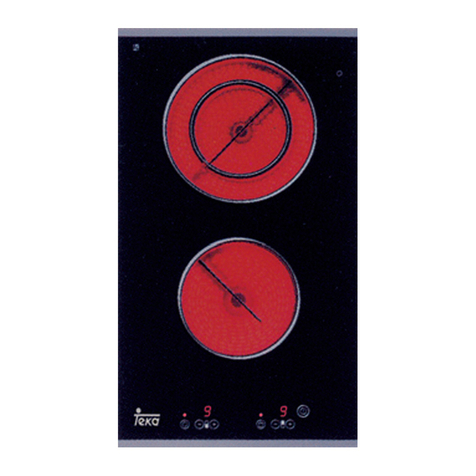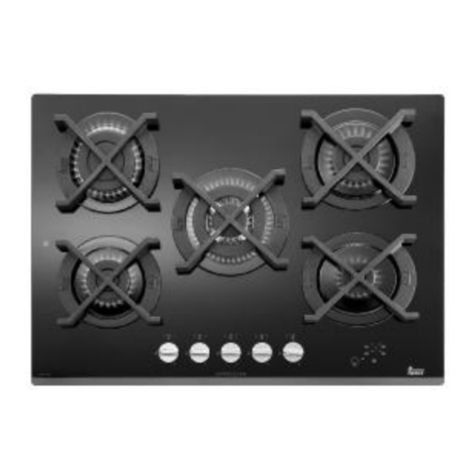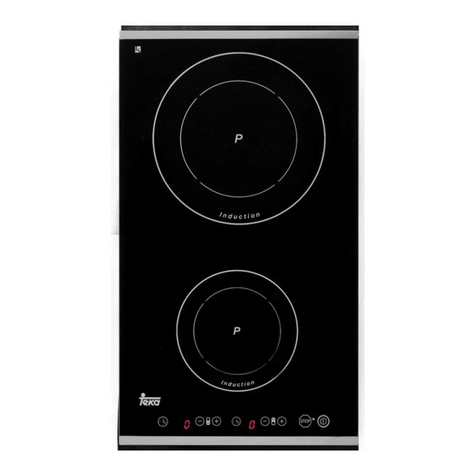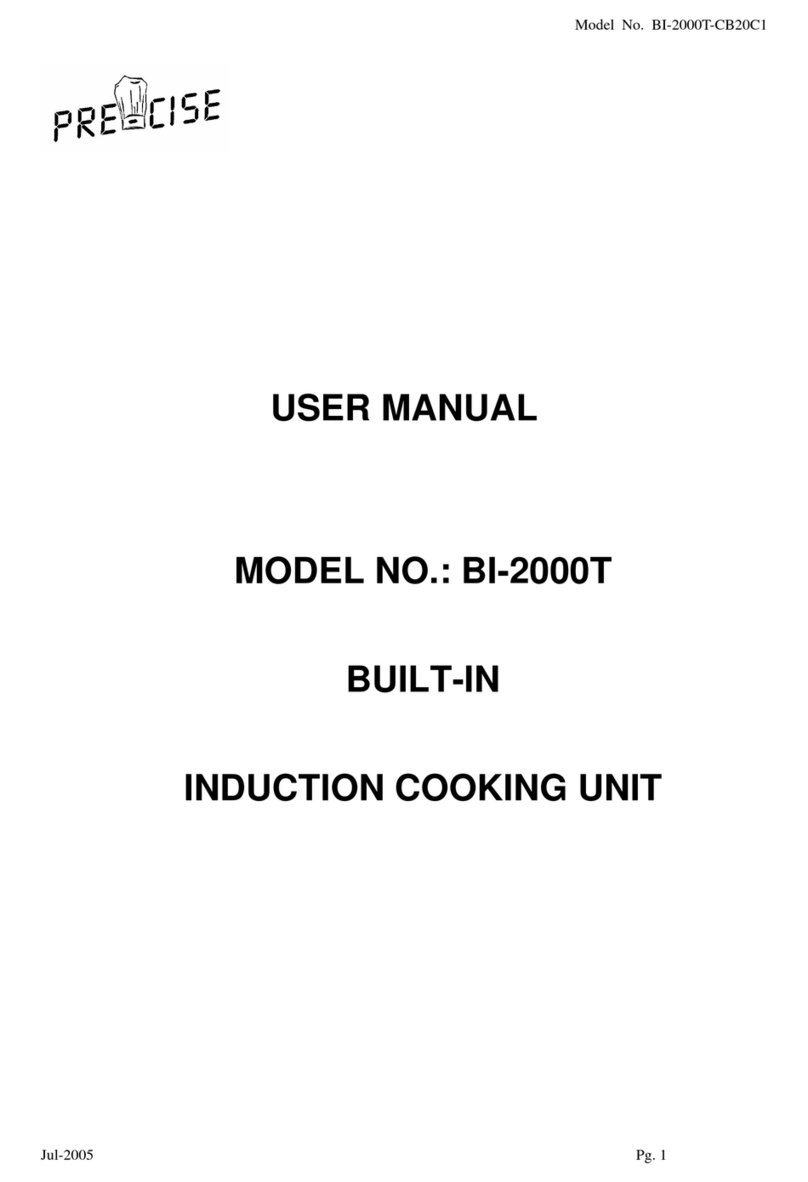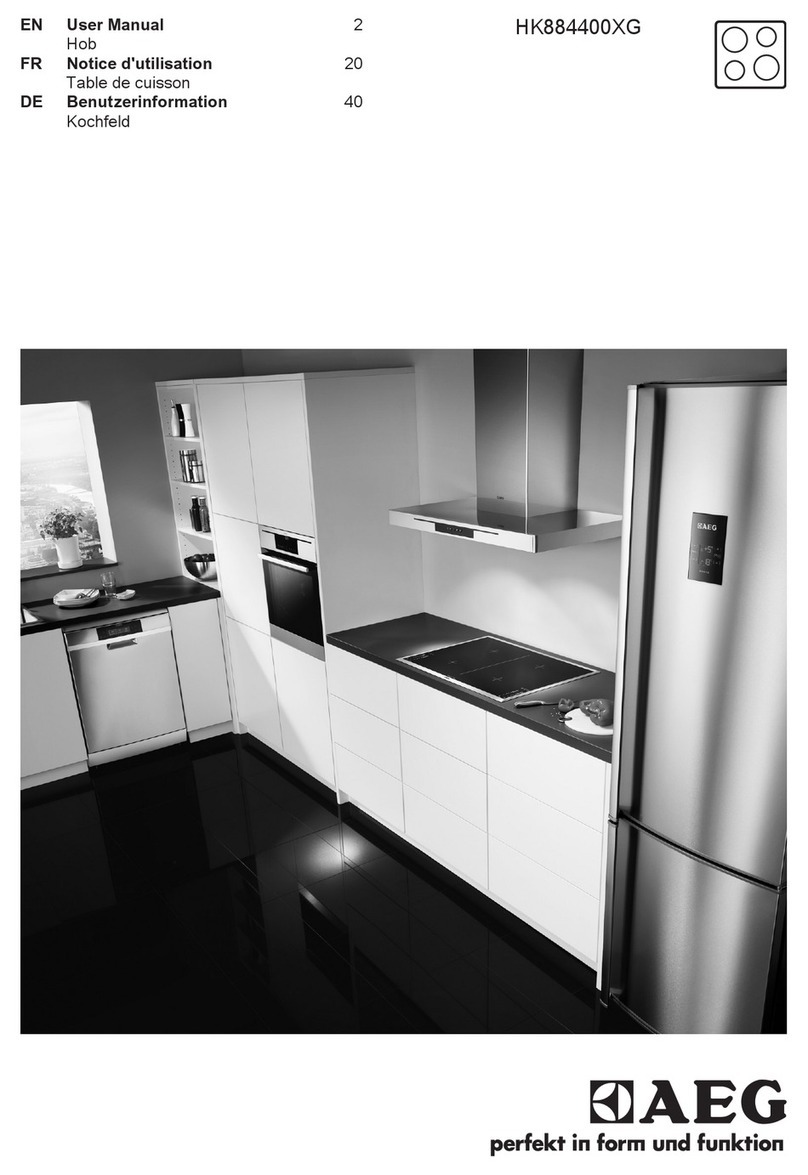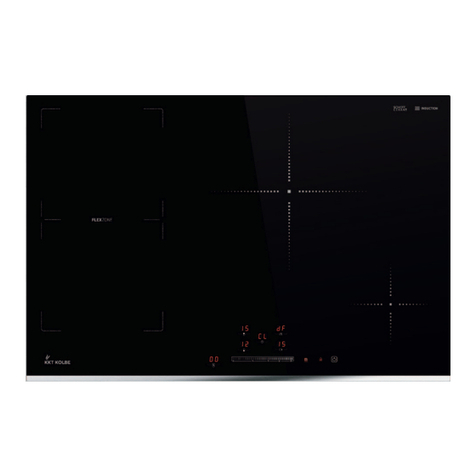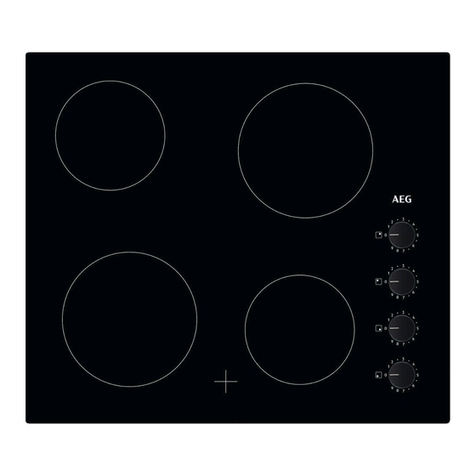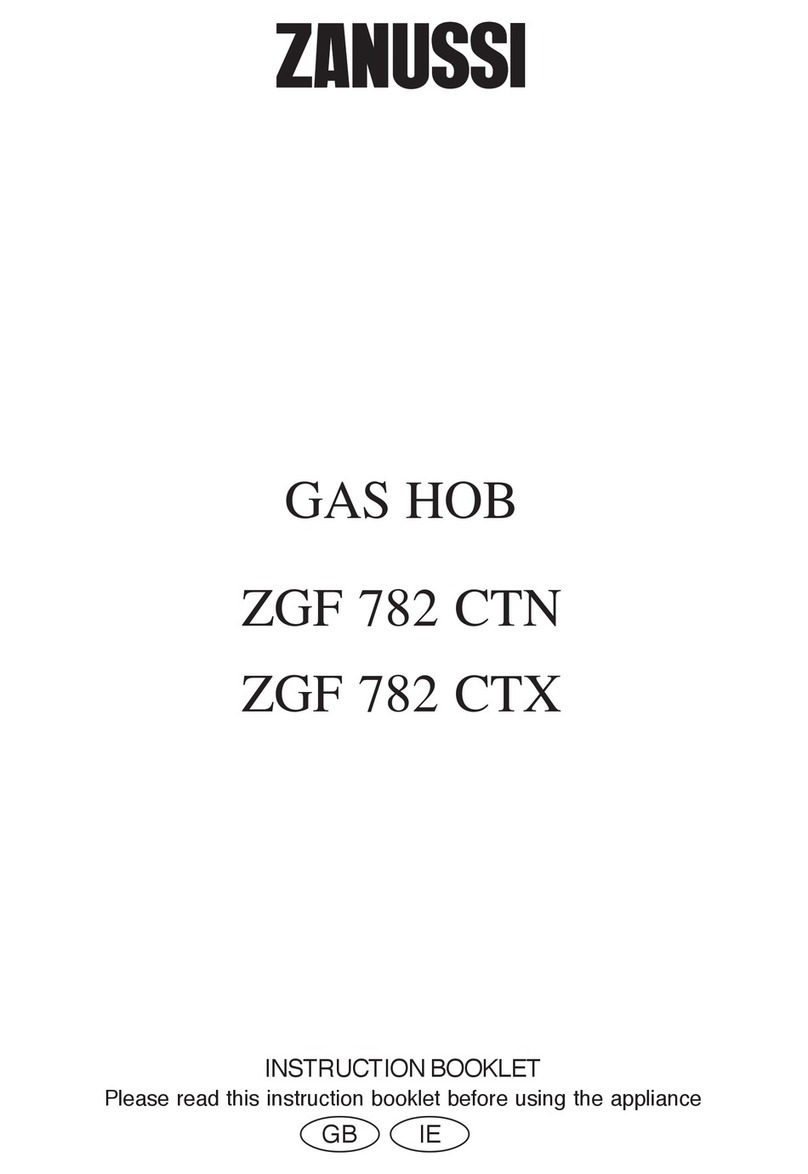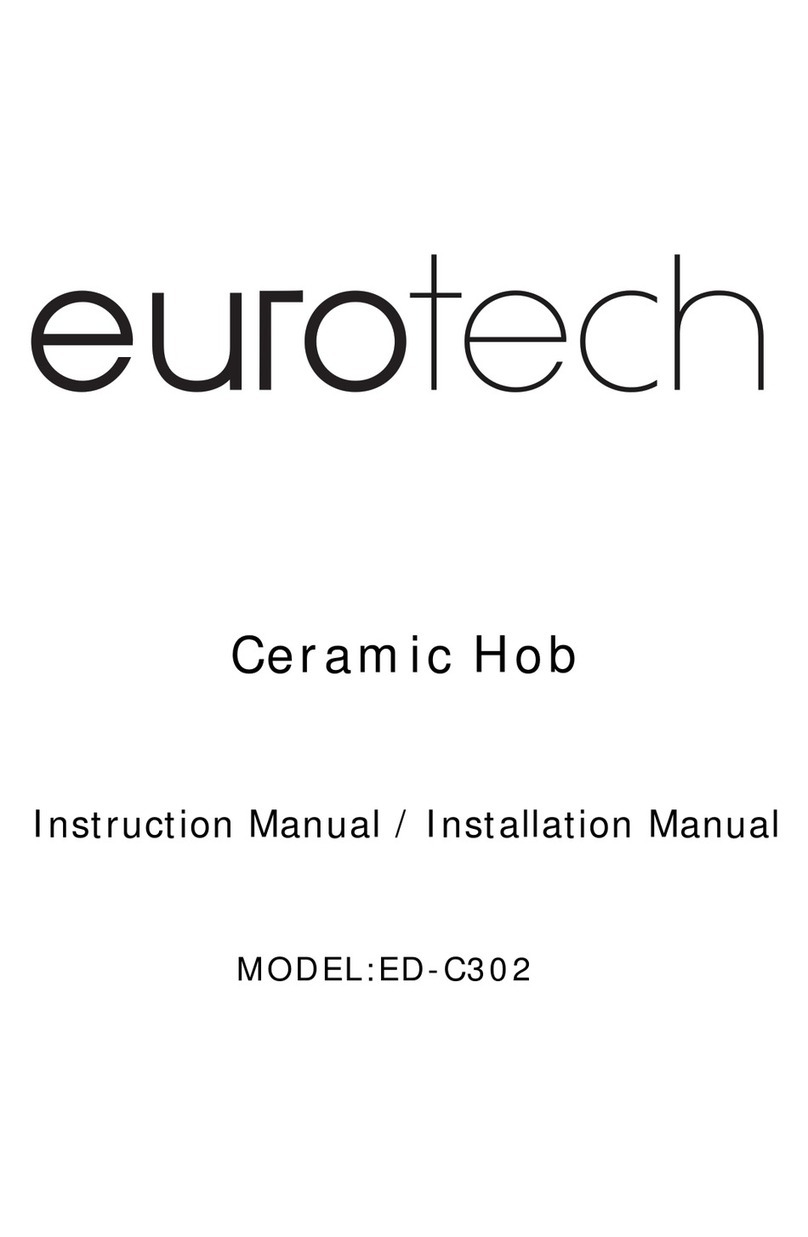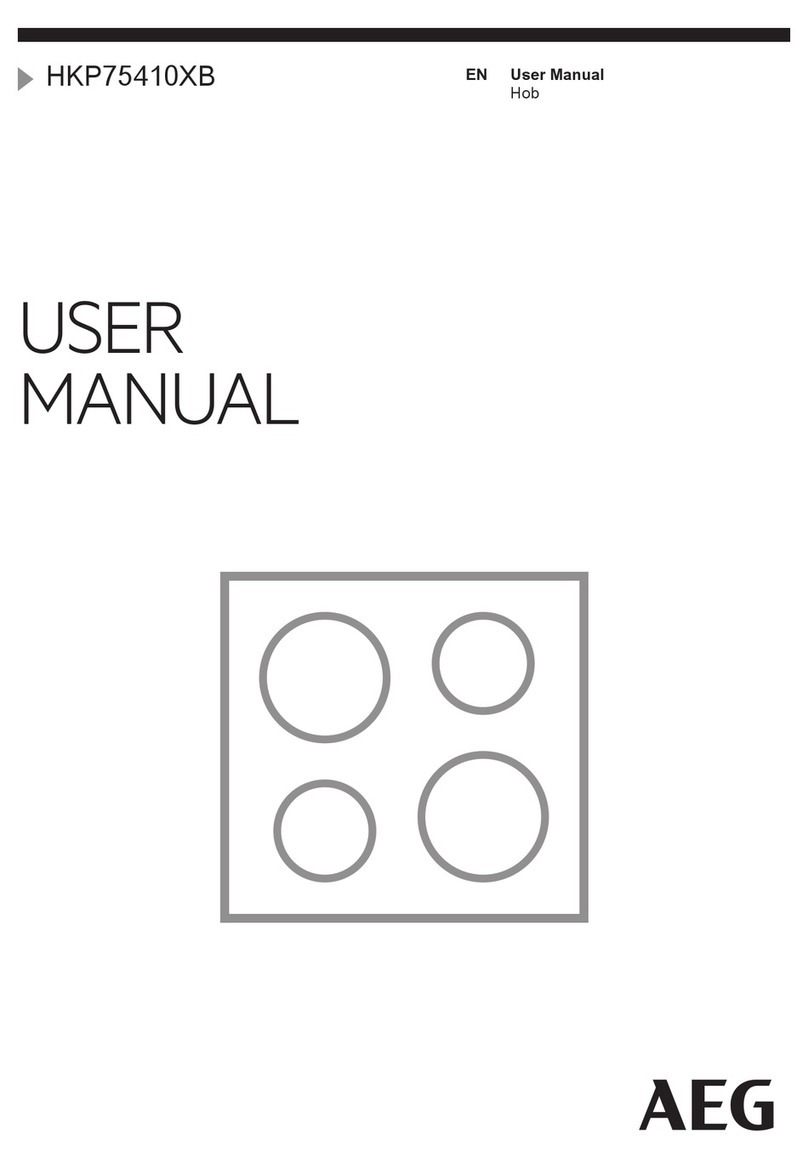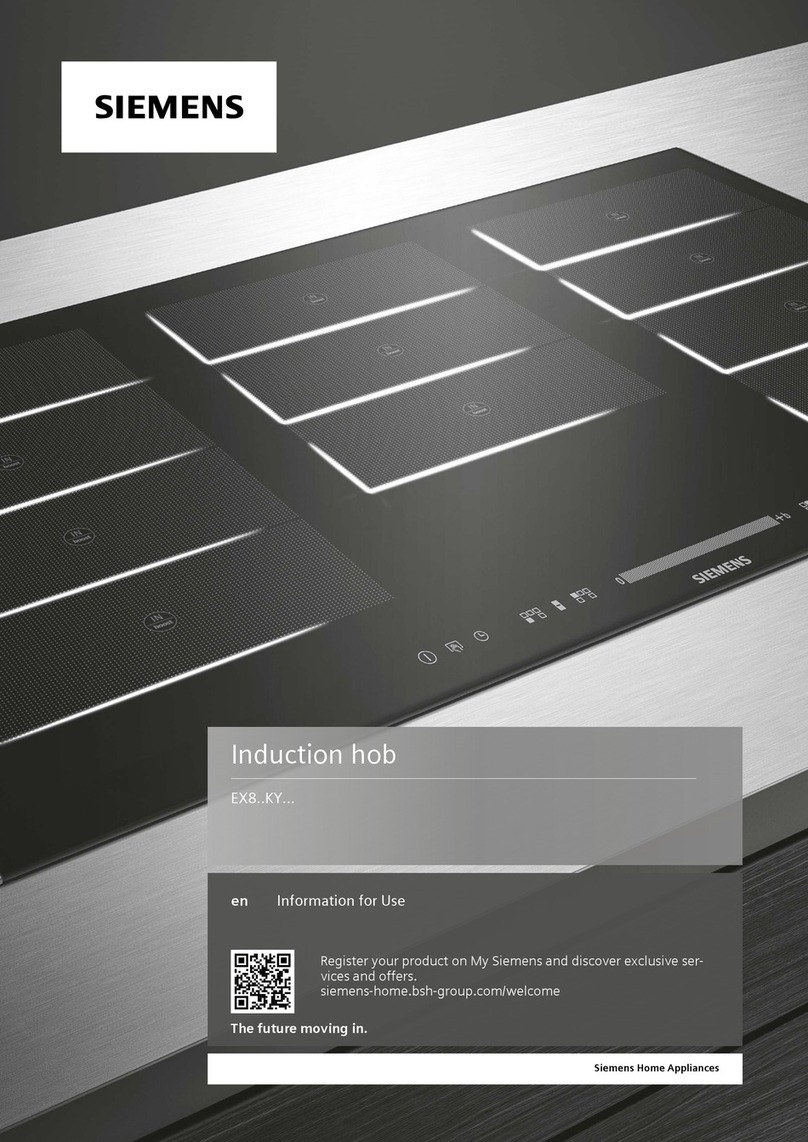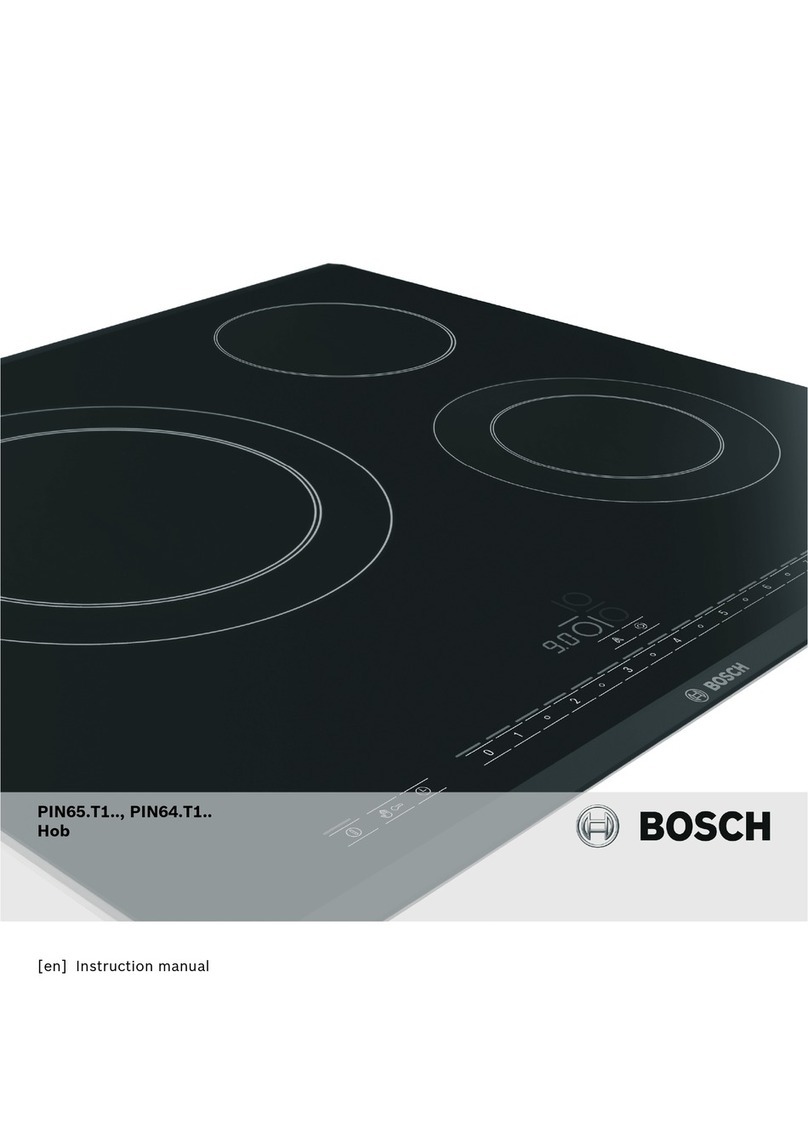18 223693
4. Fitting
4.1 Working surface cut-out
Carry out all cutting out of furniture units and worktops before fitting the
appliance, and remove all sawdust and chips.
The dimensions of the worktop recess can be seen in the dimension
drawing (fig. 1+2)
The cut sections should be sealed with a water-repellent protection
paint.
The worktop and the hob must be fitted horizontally. A tilted hob is
under tension and this increases the danger of breaking.
4.2 Installation
Before installing the hob, check that the all-round hob seal has no gaps.
If the hob is installed in a worktop with a ceramic or similar cover (tiles), remove the hob seal and seal the hob
from the worktop with a plastic seal, such as heat-resistant silicone rubber.
Important! If the cooking surface is located above furniture parts (side panels, drawers,
etc.), then an intermediate bottom must be inserted in order to prevent accidental
contact with the underside of the cooking surface. The intermediate bottom may only
be capable of removal by means of tools and must be attached with a minimum distance
of 20 mm to the underside of the cooking surface so that the mains connection cable
does not touch the underside of the cooking surface (fig. 4).
If the cooking surface is to be inserted over a built-in baking oven, then it must be
equipped with a cooling fan. An intermediate bottom is not necessary in this case.
No cross-bars may be in the area of the cut-out underneath.
Place the hob carefully into the cut-out and fasten it to the worktop with the fasteners.
Screw the fixing elements into the worktop as shown in the drawing. The hob is then pressed carefully from above
into the worktop and fixed as shown in the fig. 3.
Make sure that the worktop and the hob are horizontal. In addition, make sure that no liquids can penetrate
between the edge of the hob and the worktop or between the hob and the wall and come into contact with any
electrical appliances. Use sealing sections, strips, agents, etc. For the purposes of fire safety this appliance is a
Type Y appliance.
This means that it can be installed with its rear side and one of the other sides in contact with room or unit walls
of any height. The other sides may only be in contact with furniture or other appliances with the same height as
the appliance.
4.3 Electrical connections
(Connected loads and model designation: see front of the operating instructions)
This appliance may only be connected to the electricity supply by an approved electrician who must ensure
that the installation complies with the statutory regulations (Germany VDE, Austria ÖVE, Switzerland SEV,
etc.). The electrician must ensure that these regulations and those laid down by the local electricity supply
company are observed.
When connecting the electrical appliance, install an all-pole disconnecting device with a contact gap of at
least 3 mm. Make sure that the local mains voltage is the same as the voltage on the rating label.
To connect the appliance, unscrew the switchbox cover on the underside of the appliance to access the
terminal block. After connecting the appliance, replace the cover and secure the connection cable with the
strain relief clamp.
The connection cable must be at least HO5 VVF.
Make sure that the excess cable length is not laid in the hob’s installation area.
See fig. 4 for the position of the cable cut-out.


